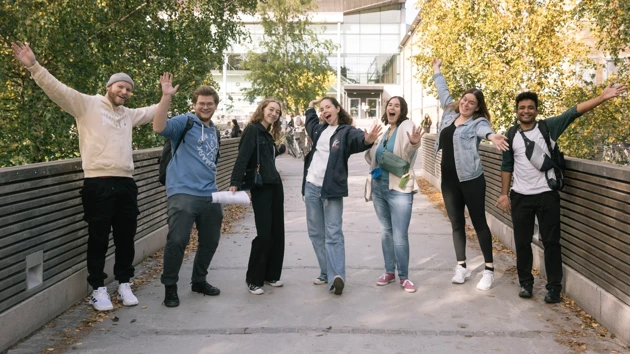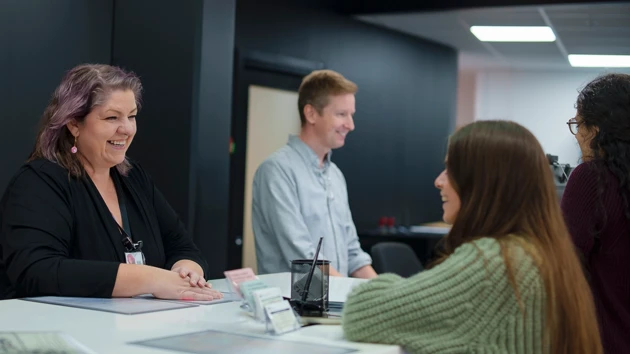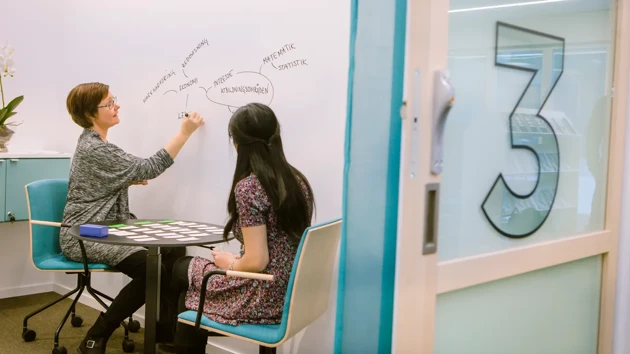Understanding Food Habits: a Sociological Perspective 7.5 credits

About the course
There is more information on food and nutrition available now than ever before and yet food behaviour often deviates from scientific advice. Despite good intentions, interference with or attempts to control people's food habits can elicit strong reactions. Clashes may occur between cultures and there is a tendency towards conflict around food. To understand these conflicts and dilemmas, food and/or health professionals must recognise how eating habits are formed and the factors that influence them.
In this course, food choice and eating behaviour are explored using the perspectives of class, gender, ethnicity, age, socio-economic status, life course, religion, and geographic region. The complex interplay of agency and structure is applied to real life contexts through assignments dealing with availability, prevailing food and health discourses, and personal/professional development.
The course is aimed at both professionals and individuals who encounter food dilemmas.The course includes analytical tools to identify the roots of potential problems and understand different views on food and eating, thereby developing an ability to act as mediators or sounding boards in challenging situations. Possible target groups are preschool teachers, psychologists, catering staff, the medical professions, and other caregivers.
Part 1. Food as Symbol, Sustenance and Socialization, 5 Credits
This part of the course covers factors which influence food habits, such as gender, age, ethnicity, class, social status, life course transitions, religion, convenience and context. These factors are viewed in connection to symbolic meanings, power relations and food norms.
Part 2. Food culture and professional or personal development, 2.5 Credits
In this part of the course, the student analyses real life situations, current discourses and their own professional or personal views on food and eating with the help of the sociological tools offered in part 1.
Apply
-
Autumn 2025
-
Understanding Food Habits: a Sociological Perspective
International admissions round
HT25 / Varied / English / Web-based (online)
Show more Show less
Starts1 September 2025
Ends18 January 2026
Number of credits7.5 credits
Type of studiesWeb-based (online)
Mandatory meetingsNo mandatory meetings
Other meetingsNone
Study pace25%
Teaching hoursMixed
Study locationVaried
LanguageEnglish
Application codeUMU-F2801
EligibilityCourses at least 90 ECTS in one subject. Proficiency in English equivalent to Swedish upper secondary course English A/6.SelectionAcademic credits
ApplicationApplication deadline was 15 January 2025. The application period is closed.
Application and tuition feesAs a citizen of a country outside the European Union (EU), the European Economic Area (EEA) or Switzerland, you are required to pay application and tuition fees for studies at Umeå University.
Application fee: SEK 900
Tuition fee, first instalment: SEK 20,800
Total fee: SEK 20,800
-
Understanding Food Habits: a Sociological Perspective
Second admissions round for EU/EEA citizens
HT25 / Varied / English / Web-based (online)
Show more Show less
Starts1 September 2025
Ends18 January 2026
Number of credits7.5 credits
Type of studiesWeb-based (online)
Mandatory meetingsNo mandatory meetings
Other meetingsNone
Study pace25%
Teaching hoursMixed
Study locationVaried
LanguageEnglish
Application codeUMU-28020
EligibilityCourses at least 90 ECTS in one subject. Proficiency in English equivalent to Swedish upper secondary course English A/6.SelectionAcademic credits
ApplicationApplication deadline was 15 April 2025. The application period is closed. Please note: This second application round is intended only for EU/EEA/Swiss citizens.
Application and tuition feesAs a citizen of a country outside the European Union (EU), the European Economic Area (EEA) or Switzerland, you are required to pay application and tuition fees for studies at Umeå University.
Application fee: SEK 900
Tuition fee, first instalment: SEK 20,800
Total fee: SEK 20,800
-
-
Autumn 2026
-
Understanding Food Habits: a Sociological Perspective
International admissions round
HT26 / Varied / English / Web-based (online)
Show more Show less
Starts31 August 2026
Ends17 January 2027
Number of credits7.5 credits
Type of studiesWeb-based (online)
Mandatory meetingsNo mandatory meetings
Other meetingsNone
Study pace25%
Teaching hoursMixed
Study locationVaried
LanguageEnglish
Application codeUMU-F2804
EligibilityCourses at least 90 ECTS in one subject. Proficiency in Proficiency in English equivalent to the level required for basic eligibility for higher studies.
SelectionAcademic credits
ApplicationOnline applications are now open. Application deadline is 15 January 2026.
Application and tuition feesAs a citizen of a country outside the European Union (EU), the European Economic Area (EEA) or Switzerland, you are required to pay application and tuition fees for studies at Umeå University.
Application fee: SEK 900
Tuition fee, first instalment: SEK 20,800
Total fee: SEK 20,800
-
Understanding Food Habits: a Sociological Perspective
Second admissions round for EU/EEA citizens
HT26 / Varied / English / Web-based (online)
Application opens 16 March 2026Show more Show less
Starts31 August 2026
Ends17 January 2027
Number of credits7.5 credits
Type of studiesWeb-based (online)
Mandatory meetingsNo mandatory meetings
Study pace25%
Teaching hoursMixed
Study locationVaried
LanguageEnglish
Application codeUMU-2800M
EligibilityCourses at least 90 ECTS in one subject. Proficiency in Proficiency in English equivalent to the level required for basic eligibility for higher studies.
SelectionAcademic credits
ApplicationThe online application opens 16 March 2026 at 09:00 CET. Application deadline is 15 April 2026. Please note: This second application round is intended only for EU/EEA/Swiss citizens.
Application and tuition feesAs a citizen of a country outside the European Union (EU), the European Economic Area (EEA) or Switzerland, you are required to pay application and tuition fees for studies at Umeå University.
Application fee: SEK 900
Tuition fee, first instalment: SEK 20,800
Total fee: SEK 20,800
-
How to apply
Apply online via universityadmissions.se
You apply to our programmes and courses via universityadmissions.se – the official website for higher education applications in Sweden. There, you can track your application, check that your documents have been registered, and log in to find our your admission results.
Late applications
Admissions to most programmes and courses typically close after the final application deadline. However, some programmes and courses may still accept late applications if seats are available. These are marked “Open for late application” on universityadmissions.se. Please note that late applications are not guaranteed to be reviewed.
More about application and admission
Explore your future at Umeå University
Join a vibrant academic community where high-quality education meets groundbreaking research in science, technology, humanities, and the arts. At Umeå University, you will learn from passionate, expert teachers and benefit from a close connection between research, education, collaboration, and innovation.
-

World's most satisfied international students
#1 globally in the main categories of Living, Support, and Overall Satisfaction.
-

A university with health at its core
Umeå University is certified as a Healthy Campus, with many initiatives that promote health and well-being.
Contact us
Your message goes to Infocenter, and they’ll make sure it gets to the right person – so you get the best and most relevant reply.
Course is given by
Food, Nutrition and Culinary ScienceGood to know

How to apply
A step-by-step guide to apply for studies at Umeå University.

International Student Guide
Essential information for your journey to Umeå and your studies here.

Study guidance
A study counsellor can help you with many of your study-related questions.